AZ-204: Developing Solutions for Microsoft Azure
Exploring API Management
Exploring API Gateways
This article delves into the essential role of API gateways within modern API management systems. An API gateway serves as middleware, connecting client applications with backend services (such as databases and microservices). Acting as a reverse proxy, it routes client requests to the appropriate backends based on predefined rules and configurations.
In addition to routing, the API gateway manages critical functions like authentication, SSL termination, and rate limiting. These capabilities ensure secure and efficient communication, reduce server load, and enforce request thresholds, thereby boosting overall system security, performance, and scalability.
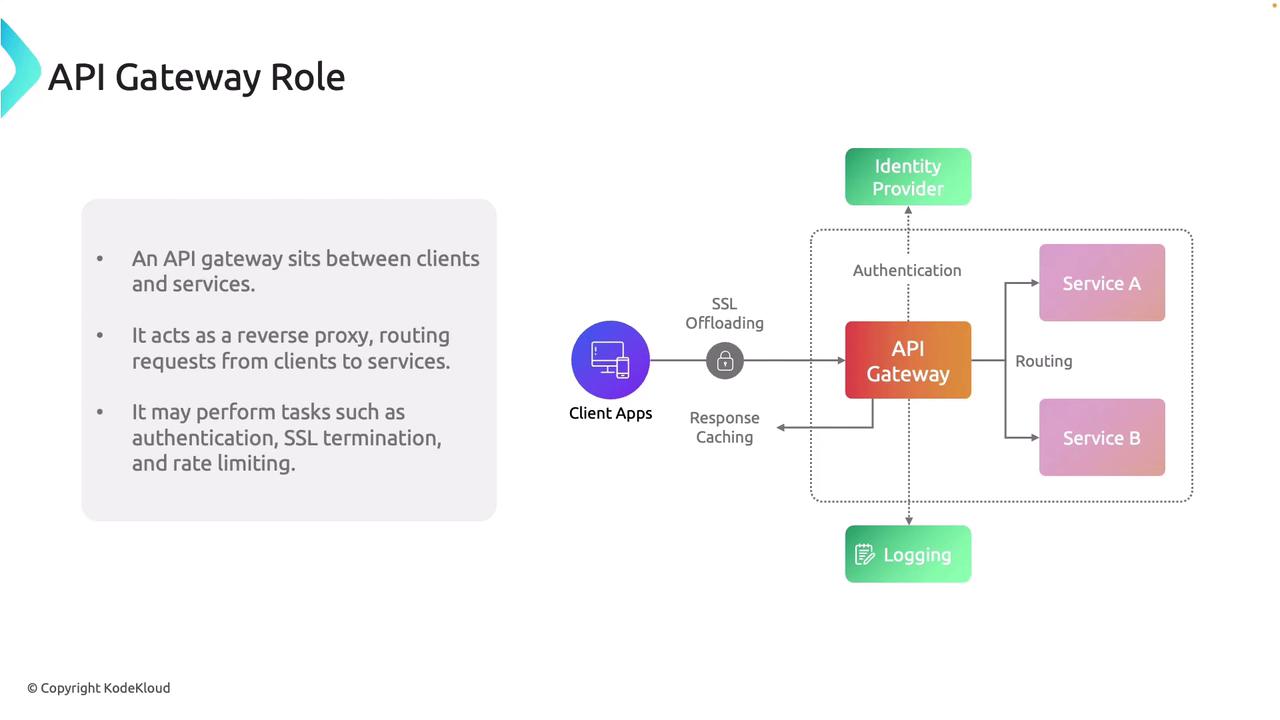
Key Insight
An API gateway enables streamlined client-to-service communication while abstracting and centralizing cross-cutting responsibilities.
Without an API gateway, clients must directly interact with multiple backend services. This direct communication leads to increased complexity and tightly coupled systems—any change in a backend service can immediately impact all consuming clients. Moreover, each service is then responsible for its own security, logging, and performance optimizations. Handling diverse protocols across services further complicates integration.
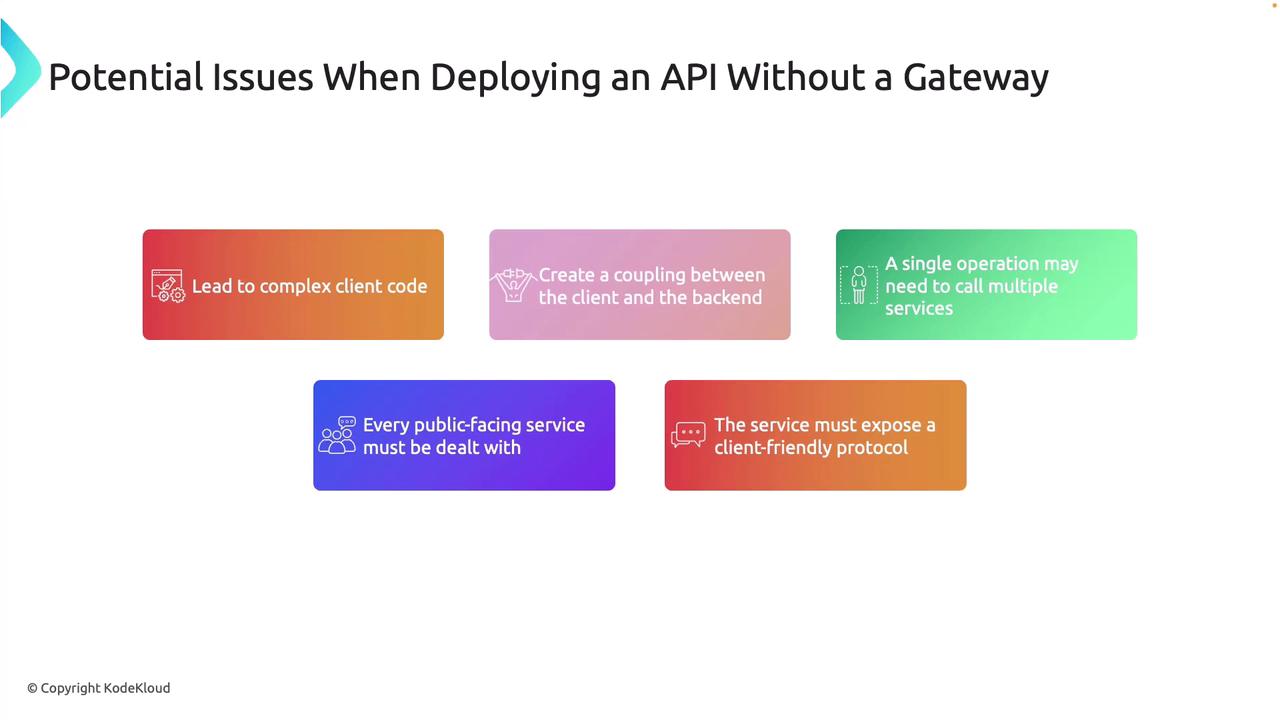
Warning
Avoiding the use of an API gateway can result in a fragile, unscalable, and insecure system. Implementing a gateway is highly recommended to mitigate these risks.
Common API Gateway Design Patterns
Implementing an API gateway unlocks several design patterns that simplify client interactions and backend integrations:
Gateway Routing
The gateway acts as a reverse proxy, routing client requests to the correct backend services based on established rules.Gateway Aggregation
Multiple backend service calls are combined into a single client request, reducing the number of calls needed and simplifying client logic.Gateway Offloading
Cross-cutting concerns—such as authentication, logging, and SSL termination—are managed by the gateway, reducing the burden on individual services.
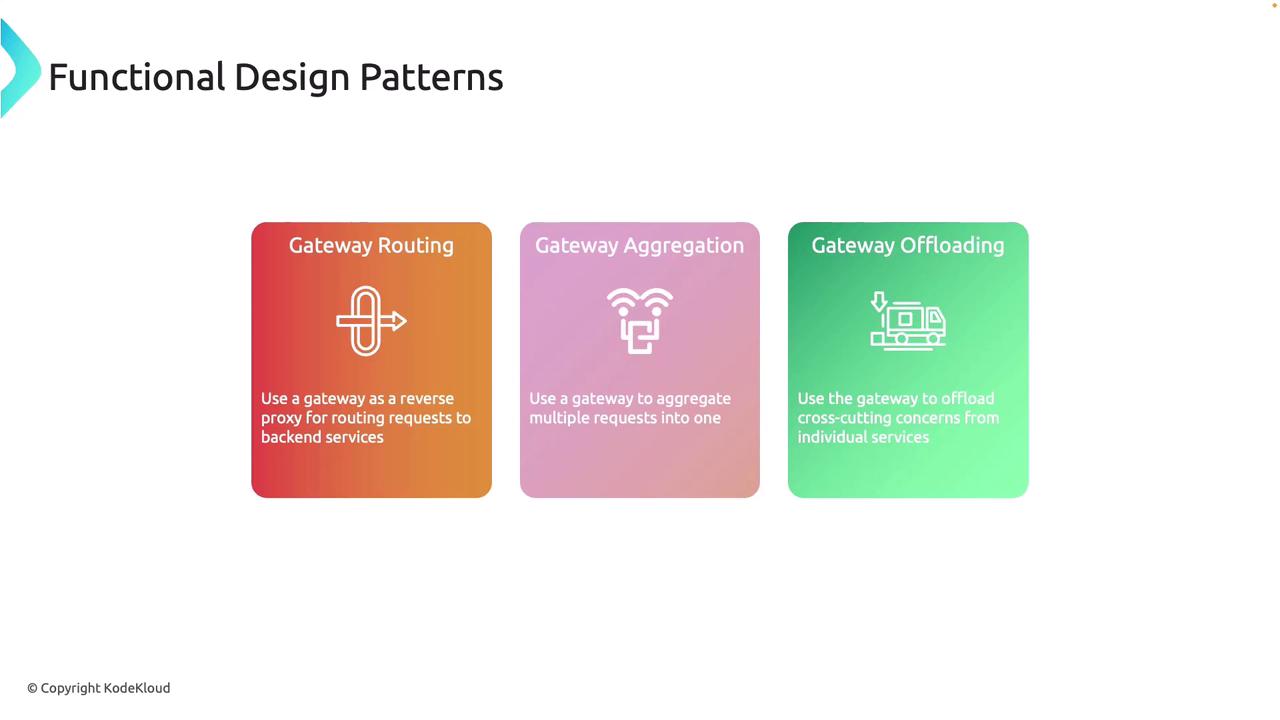
These design patterns highlight the flexibility of platforms like Azure API Management and their ability to create scalable, efficient, and maintainable API systems.
Implementing an API Gateway Using Azure API Management
In this section, we will explore how to set up an API gateway using the Azure portal. In our example, the API Management service handles two web APIs: one for flight logs and another for employee information—both hosted in Azure App Service.
Sample APIs
When a request is sent to the employee endpoint, the service returns employee data. Below is a sample JSON response from the employee API:
[
{
"employeeId": 1,
"firstName": "Fanny",
"lastName": "Mose",
"salary": 37411.79,
"hireDate": "2009-06-17T08:00:00",
"department": "IT",
"employeeStatus": "Contractor"
},
{
"employeeId": 2,
"firstName": "Reddy",
"lastName": "Meweld",
"salary": 13082.04,
"hireDate": "2009-01-17T08:00:00",
"department": "Marketing",
"employeeStatus": "Contractor"
},
{
"employeeId": 3,
"firstName": "Andread",
"lastName": "Mullsm",
"salary": 13074.68,
"hireDate": "2008-12-31T08:00:00",
"department": "Marketing",
"employeeStatus": "Part-time"
}
]
Similarly, the flight logs API retrieves key information such as flight numbers, airport codes, departure/arrival times, airline names, and flight durations:
[
{
"flightNumber": 1566,
"departureAirportCode": "LIZ",
"arrivalAirportCode": "CWM",
"departureDatetime": "2022-10-13T09:00:00Z",
"arrivalDatetime": "2022-10-13T09:00:00Z",
"airlineName": "United",
"flightDurationInMinutes": 35
},
{
"flightNumber": 5377,
"departureAirportCode": "TBM",
"arrivalAirportCode": "TXN",
"departureDatetime": "2022-05-05T08:00:00Z",
"arrivalDatetime": "2022-05-05T08:00:00Z",
"airlineName": "United",
"flightDurationInMinutes": 1309
},
{
"flightNumber": 3034,
"departureAirportCode": "TXN",
"arrivalAirportCode": "LIZ",
"departureDatetime": "2022-01-21T09:00:00Z",
"arrivalDatetime": "2022-01-21T09:00:00Z",
"airlineName": "United",
"flightDurationInMinutes": 120
}
]
Deploying API Management in Azure
When deploying the API Management service in the Azure portal, you need to select an appropriate resource group and region (e.g., East US). In our example, the service is deployed under the name "C204APIM01" for the organization "KodeKloud." The Developer pricing tier is used during development, with the option to upgrade later.
Azure offers a range of monitoring and connectivity options, including Log Analytics, Defender for APIs, and Application Insights. You can configure the service to be public, attach it to a virtual network, or use a private endpoint. Managed identities further enhance operations such as retrieving certificates from the Key Vault.


After finalizing these options, you proceed with deployment.

Deployment typically takes between 40 and 60 minutes. Once deployed, click "Go to Resource" to view details like the gateway URL and developer portal URL. An Echo API is provided for testing, and additional APIs can be added by navigating to the "APIs" section.

Creating APIs from App Service
From the available options, you can define an API from an HTTP endpoint by selecting the corresponding App Service. For example, to create the employee API:
- Display Name: Employee API
- Path: /api/employee
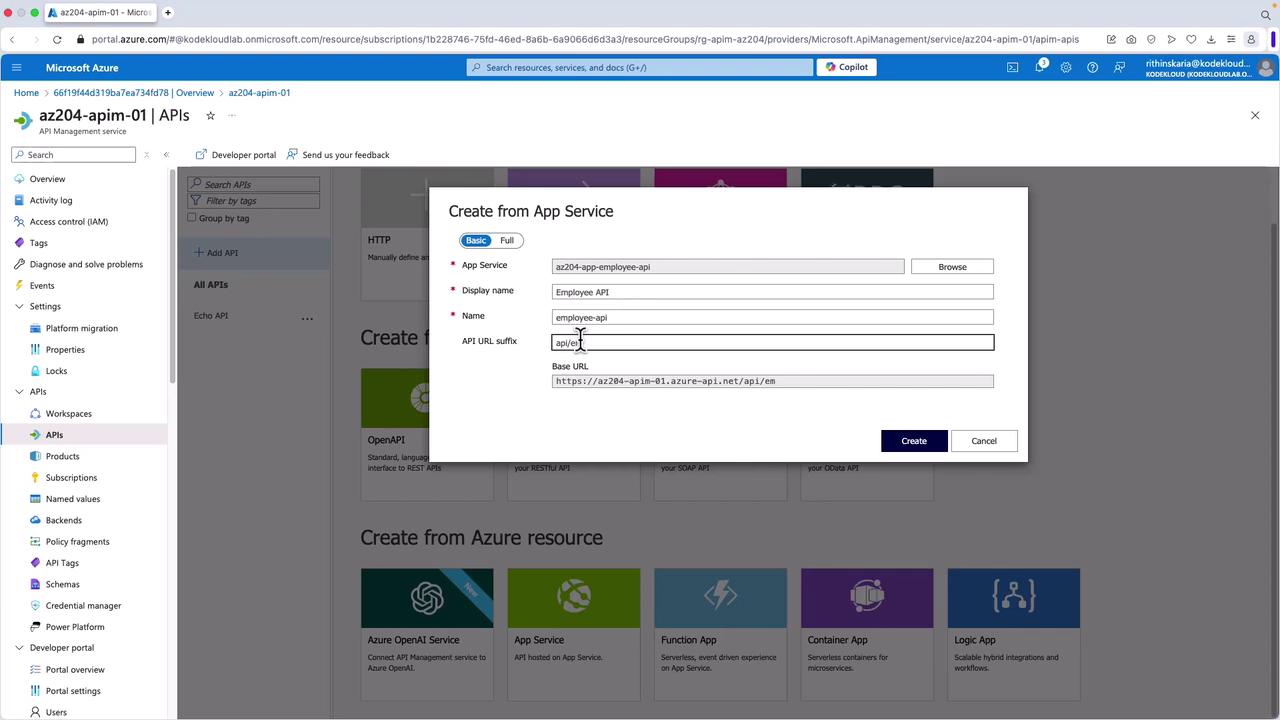
Similarly, add the flight logs API with the path "/api/flightlogs":
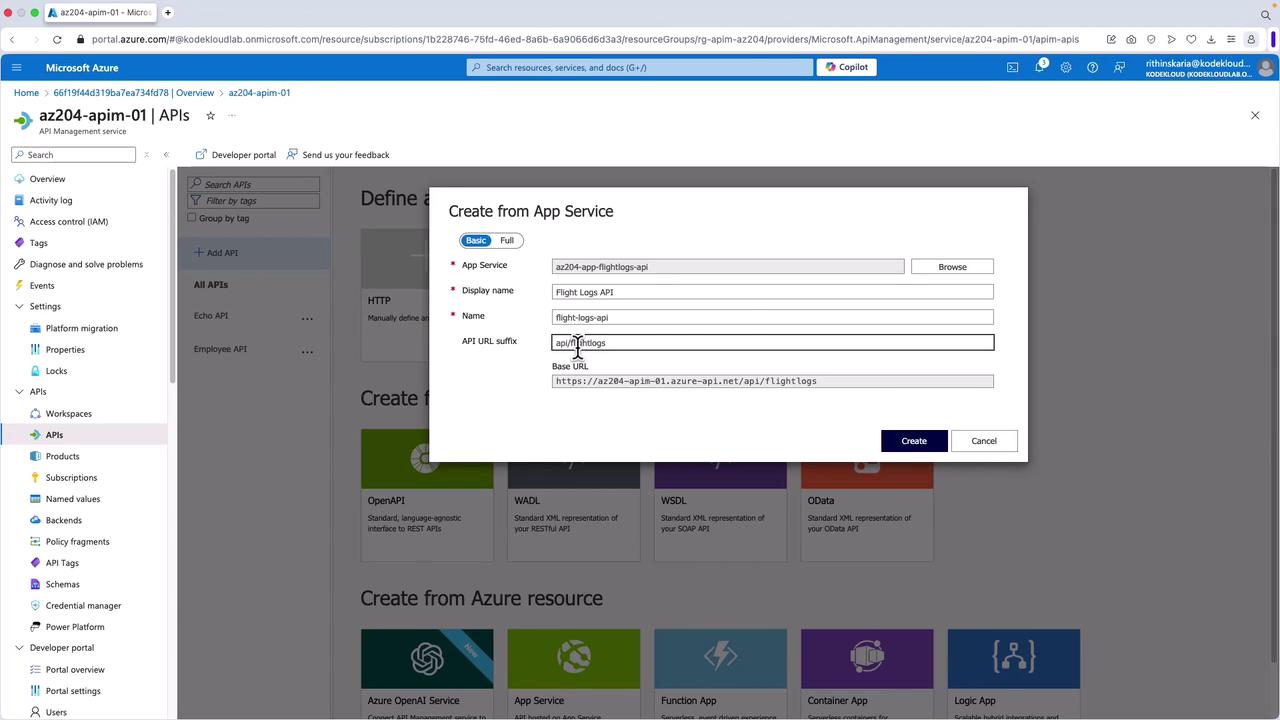
At this stage, direct API calls are not required as additional configurations—such as subscription keys and policies—are necessary to secure and manage these APIs effectively. Once configured, you can test the APIs through the Azure portal.
This concludes our exploration of API gateways, their design patterns, and their implementation using Azure API Management. Future articles will delve deeper into configuring subscription keys, policies, and other advanced features to further secure and optimize your API ecosystem.
Watch Video
Watch video content